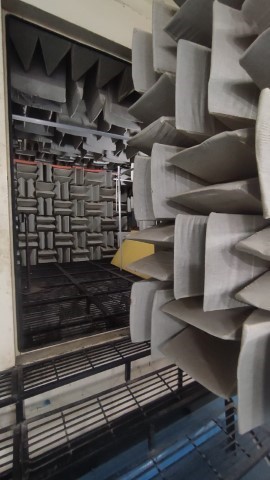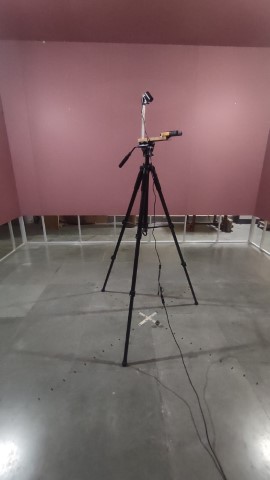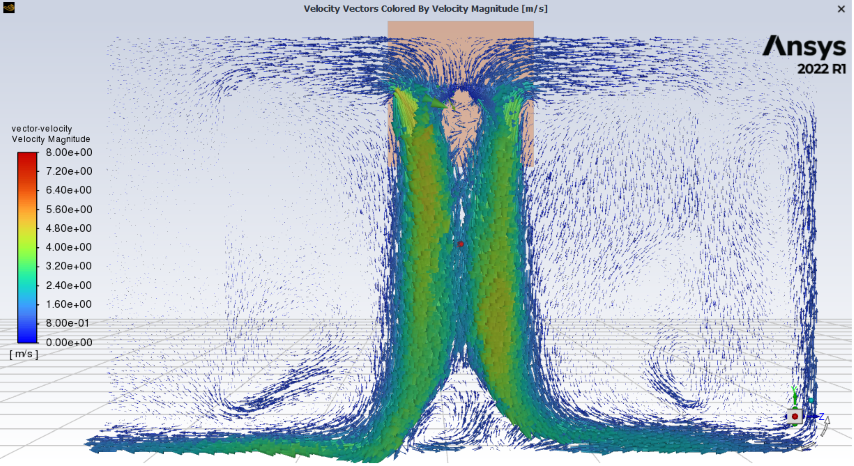Noise measurement & Air Flow measurement of Ceiling Fans
My project focused on evaluating two critical features of ceiling fans: their air flow rate and the noise level during operation. We selected three different ceiling fan models for this study.
For noise measurement, we conducted our tests inside a Full-Anechoic Chamber at the Aerospace Department of IIT Bombay. To facilitate accurate readings, fixtures were designed to position the measurement equipment at three points forming an arc. This arc was 1.8 times the diameter of the fan. To ease the process of measurement, the fans were mounted upside down. The measurements were taken using a Sound Level Meter and a Behringer Microphone.

The air flow rate of these fans was assessed in a specially constructed Air Delivery Test chamber. This setup was a key part of our project. In this chamber, the fans were mounted at the top, aligning with the testing protocol. The measurement plane was strategically placed 1.5 meters above the ground. We focused on points along the diagonals for a comprehensive assessment. For capturing the air flow data, a wind anemometer was used to record the velocity at each of these points.

In addition to the physical measurements, both the noise and air flow rates of the ceiling fans were also simulated using ANSYS Fluent. These simulations were configured to mirror the same dimensions and conditions as the experimental setup. This approach allowed us to compare the computational data directly with the experimental results obtained.

Performing these simulations served a dual purpose. Firstly, it provided a method to validate the experimental data, helping us to confirm the accuracy of our physical measurements. Secondly, it offered insights into whether the experimental values were within expected ranges or if there were any discrepancies that needed further investigation.